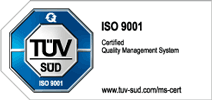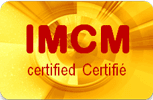Demographic change and skill shortages increase both the importance and the challenges of „leadership“. These include qualification, recruitment, motivation and retention of current and future employees and determine whether the organization remains competitive in the long run.
Dr. Florian Birk | Arlette Dumont du Voitel | Friedel Martiny | Hilke Steffens
Stress test: demographic change
Every year, the Society for German Language nominates a „word of the year“. As a tribute to the financial crisis and the EU’s attempts to translate lessons learned into meaningful, sustainable actions, the word „stress test“ made the cut in 2012. „Demographic change“ or „skill shortage“ could have been an equally valid choice since both terms dominated many discussions and continue to do so, which is the prerequisite for the nomination for the word of the year.
Even though „demographic change“ and „skill shortage“ didn’t make it this time around, the issue has become a stress test for many companies. Companies of all sizes, in particular SMEs – Germany’s economic backbone -, increasingly start to feel the consequences of this transformation. There isn’t much time left for trial and error in adapting to the new situation. Having made the necessary changes will be a prerequisite to survival.
The symptoms and their causes are well known. The Federal Statistical Office regularly releases images of the reversing age pyramid, leaving no doubt that the work force in general dwindles. As a result, less and less people need to perform more and more work to provide social and economic stability at the very least – if growth is too much to wish for. Simultaneously, companies observe a rising occurance of sickness leave, lack of motivation and ideas as well as inadequate qualifications among their employees – the opposite of what would be required to be able to lift the weight of an upside down pyramid.
A very basic economic rule is going to make a huge difference to organizations. The more scarce „human resources“ become, the more valuable and expensive they will be. Managing, leading and developing individuals and teams as well as furthering their qualification is critically important for the existence and development of any organization now and even more so in the future.
Even today companies have difficulties recruiting qualified staff. But once recruited, these employees need to stay within the organization. Managers have to build long-term relationships with their employees and gain their loyalty since the market for qualified staff is very competitive.
Lack of qualified staff
The word „shortage“ already suggests that there is not only a demographic shift, but also a lack of qualified staff. Companies, hence, struggle to fill positions that require special knowledge and expertise. Unfortunately, these positions are usually crucial to the core business. As a result, companies risk losing their productivity and sustainability.
If skilled workers are not readily available on the labor market anymore, other ways of „staff procurement“ have to be identified and pursued. This will require a much higher degree of strategic planning starting with the question: Where does the organization see itself in the short, medium and long term and which kinds of profiles and qualifications does it require to achieve strategic goals?
Once a strategic road map is drawn, the organization is well advised to search for the skills needed among its current employees. Even if they haven’t got the expertise yet, it may well be that some of these employees are diamonds in the rough who are interested in pursuing their professional development in an area that is benefical to the organization. This provides the foundations to home grow the competencies needed. Further considerations may include whether skills and qualifications are required permanently or temporarily or if other employment models are suitable, which cater for specific needs at specific times such as partnerships, alliances and networks. In this context, there is another term that will dominate many discussions in the near future: skill requirements analysis.
High levels of competition
Knowing which qualifications are necessary is a good starting point. But considering the level of competition, it is nothing more than a good starting point. A solid and competitive strategy still requires more effort. Clever organizations don’t wait for skilled workers to enter the labour market. They proactively search for their future employees in schools, universities and other places where they have access to people who show interest in the subject and, as a consequence, may develop the motivation to pursue an education and a career in this field. As more and more companies catch on to these measures and competition is bound to rise further, organizations will need to be even more creative in attracting potential specialists in the future, in making sure they continuously develop the skills of their employees, in using those skills effectively and in keeping them long term.
More than just recruitment
As previously mentioned, there are different approaches to accompany potential junior staff members during their primary or secondary education and to foster their interests in a particular subject. Social media and networks also provide new ways of recruitment. These platforms are useful in two ways. Firstly, companies get to meet their potential candidates virtually and free of any obligations before they may wish to invite them to a personal interview. Secondly, companies have the opportunity to portray, brand and promote themselves as an attractive employer and to gain their own employees as fans, friends and followers. For recommendations by existing customers – or, in this case, employees – to their colleagues, friends and family members are still the most effective form of marketing.
Other measures further aim to create and nurture a positive image as an employer. Contests such as „Best Employer of the Year“ or „Great Place to Work“ are increasingly interesting to companies of all sizes and industries to positively set themselves apart from the competition. Employee satisfaction serves, thus, not just as an anchor to keep exisiting employees on board, but also as a bait to attract new ones. Employee surveys and management reviews alike provide a solid foundation for both.
Along with good records of employee satisfaction, noble corporate philosophies and visions are created. This development is known as „Employer Branding“. Its purpose is to shape the perception of a company as a good employer internally and externally and to foster identification with and loyalty to the company.
The optimal candidate
Despite all these efforts, many companies come to realize that they have to let go of the idea that they will find their ready made dream candidate. They increasingly need to open up to people that seem less ideal at first sight: career changers, new entrants or re-entrants after an extended career break (e.g. after parental leave) and also professionals from abroad with foreign professional qualifications that still need to be recognized. This presents new challenges to (re-) integration and qualification efforts.
In addition, it is increasingly difficult to determine in advance what kind of qualifications a potential candidate should have as globalization and technological progress require new sets of professional, technological or language skills on short notice as well as the readiness to adapt to new production, distribution, supply chain or other work processes. This also means that with regards to the aging workforce, life-long learning is to be taken literally. Organizations need to ensure the continous education of their employees of all ages.

Long-term commitment
Providing for continous education and qualification, however, won’t solve the problem entirely either. The title of the press release on the results of the latest Gallup survey (2010) reads „Every fifth employee has internally quit their job“. This headline is as descriptive as it is worrying. The survey measured the strength of the emotional bond of workers in Germany to their company. According to the study, 13% of all employees have a high, 66% a low and 21% absolutely no emotional attachment to their organization. This means the majority of employees in most companies „fulfill their duty“ at work. They have no bad conscience when it comes to taking „sickies“, stealing office supplies or leaving the company altogether. Constructive and productive behavior, however, is rare to find.
Motivation
These findings come as a surprise since it is well known what drives motivation in employees thanks to numerous valuable books and articles written by researchers and psychologists. Salary increases, the allocation of status symbols, job security or career opportunities are welcome in our rather rich and developed economy and society – if not expected. But they are hardly enough. Work-life balance, health care and family friendly work environments are also gaining importance.
In contrast to these calls, so-called „atypical“ employment models such as interim work or work in networks and alliances have become more and more common. They need to work with none or much less of these incentives and bonding elements. Employers and employees in these environments face the challenge to maintain a healthy balance between independence and loyalty while creating and keeping motivation.
Consequently, there has to be a different factor that drives motivation, satisfaction and emotional attachment. And there is. It is usually referred to as „self-fulfillment“ or „self-realization“.
Leadership as „Leitmotiv“
„Self-fulfillment“ or „self-realization“ is a so-called „soft factor“. As a matter of fact, „self-fulfillment“ or „self-realization“ means something different to each and every individual. There are, thus, as many ways to address this factor as there are meanings and interpretations to it. Motivating employees by helping them to fulfill themselves is, therefore, a highly complex task requiring highly developed soft skills.
These „soft skills“ themselves suffer from the perception that „soft“ means „easy“. And „easy“ is „neglectable“. A more appropriate synonym for „soft“ in this context would be „intangible“. This would foster the conclusion that factors, that are hard to grasp, are also difficult to handle. For the formula for „self-realization“ has to be deducted for each employee individually.
It would be equally decieving to conclude that „self-realization“ guarantees that work is pleasant at all times and cost. It rather implies an alignment of goals between the organization and its employees, so that employees feel proud and successful along with the achievements realized by the organization as a whole.
Systemic leadership approaches cater for meaningful perspectives in this regard. This is mainly due to their consideration of people as part of a social system. Because of this characteristic, the human resource differs significantly from other factors of production. The systemic approach accepts the fact that a human resource can not be ordered with the necessary functionality and operated by pressing „play“. A human being receives information, processes it and responds to it subjectively. Reactions aren’t always predictable and understandable – and they are less so as soon as more than one culture is involved.
These aspects should be embraced as an opportunity rather than being ignored. Organizations that have done so and worked with their employees towards a win-win situation, will be generously rewarded: in addition to emotional attachment, loyalty and commitment, they benefit from the invaluable marketing and recruitment work of their employees. Satisfied employees are likely to recommend the company as an employer, to support the employer branding and to vote for the company as „Best Employer of the Year“.
The Gallup study confirms that the behavior of managers greatly affects the strength of emotional ties of employees to the organization. It also shows that employees with high emotional attachment to their organization are significantly more willing and able to perform, to develop ideas and innovations and, last but not least, are by far less interested in changing employers in the near future.
In our part of the world, money is mainly made with knowledge and innovations. Being the holder of knowledge and the creator of ideas, the human resource is, thus, a company’s most important resource. As it is increasingly becoming a scarce commodity, leadership should focus on investing in win-win-situations with their employees.
(First published in „a balancing act“ an amontis initiative*magazine)










